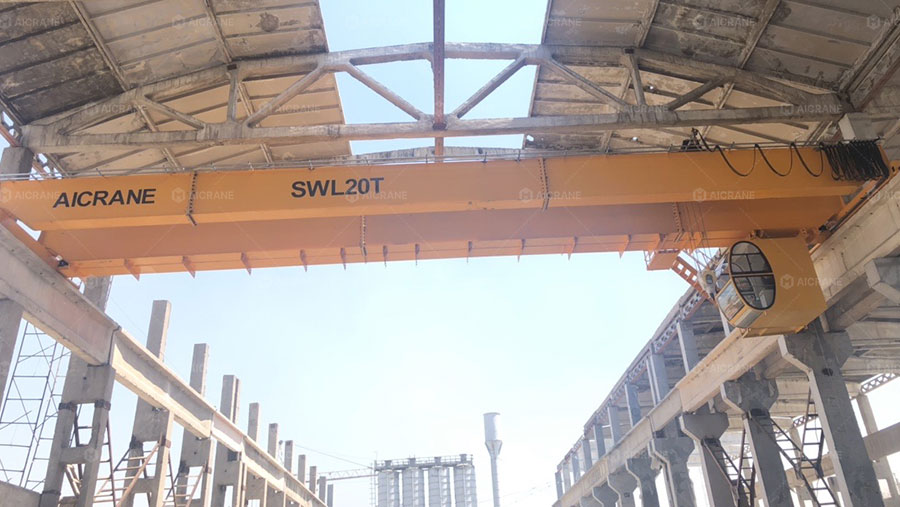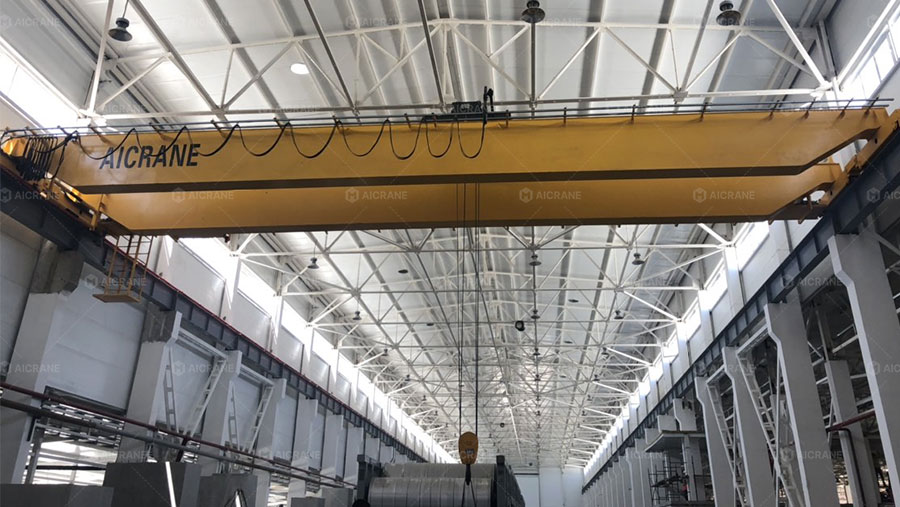Overhead cranes are vital equipment in many industries, from manufacturing plants to warehouses and construction sites. They enable the safe and efficient lifting and movement of heavy loads, enhancing productivity and reducing manual labor risks. One of the most critical parameters when selecting or designing an overhead crane is its load capacity—the maximum weight the crane can safely lift.
Understanding how to calculate the load capacity of an overhead bridge crane for sale is essential for engineers, operators, and safety inspectors to ensure operational safety and compliance with regulations. This article will walk you through the basics of load capacity calculation and illustrate the process with specific tonnage examples.

What is Load Capacity?
Load capacity, also known as lifting capacity or rated load, is the maximum weight an overhead crane can lift under normal working conditions. This value is determined by considering multiple factors, including the crane’s design, materials, safety factors, and operational duty cycle.
The load capacity is typically expressed in tons (metric or imperial). For example, a crane might be rated to lift 10 tons (10 ton overhead cranes) or 50 tons (50 ton overhead cranes).
Key Factors Affecting Load Capacity
Before diving into calculations, it’s important to understand what influences the load capacity of an overhead crane:
-
Structural Design and Material Strength
The beams, girders, and supporting framework must be designed to handle specific loads. The materials used (e.g., steel grade) affect strength. -
Hoist and Trolley Specifications
The hoist mechanism, including the motor, gearbox, wire rope or chain, limits the maximum load. -
Safety Factors and Regulations
To account for uncertainties and dynamic loading, a safety factor (usually between 1.25 to 1.5 or higher) is applied, reducing the theoretical maximum capacity to a safe working load. -
Crane Span and Lifting Height
The distance between rails (span) and the height the load needs to be lifted affect the structural requirements and hence the load capacity. -
Duty Cycle and Usage Category
How often and how hard the crane operates affects design loads and service life.

Basic Formula for Load Capacity Calculation
While the detailed engineering calculations require complex structural analysis and design codes, the fundamental approach to estimate the safe load capacity involves:
Where:
-
Breaking Load is the maximum load at which the crane or its components would fail.
-
Safety Factor accounts for uncertainties, wear, dynamic effects, and safety requirements.
Step-by-Step Calculation Example
Let’s consider a practical example to illustrate how to calculate the load capacity of an overhead traveling crane.
Example: Designing a 20-Ton Overhead Crane
Step 1: Determine the Maximum Load to be Lifted
Assume the intended maximum load is 20 tons (20,000 kg).
Step 2: Select Safety Factor
For overhead cranes, safety factors typically range from 1.25 to 1.5. For this example, we choose 1.5 to ensure high safety.
Step 3: Calculate Breaking Load
Breaking Load=SWL×Safety Factor=20 tons×1.5=30 tons
This means the crane’s components (hoist wire ropes, structural beams, etc.) must withstand at least 30 tons before failure.
Step 4: Check Structural and Mechanical Specifications
-
The steel used for girders must have a yield strength to safely carry the load with minimal deformation.
-
The hoist wire rope must have a minimum breaking strength of 30 tons.
-
The motor and gearbox must be rated for loads above 20 tons, preferably closer to 30 tons for durability.
Step 5: Consider Dynamic Effects
Lifting loads often involve dynamic forces, such as acceleration, deceleration, and swinging. This could increase the effective load by 10-20%. This is sometimes included in the safety factor, but if not, it should be accounted for by increasing the calculated breaking load.
For instance, applying an additional 15% dynamic load:
Effective Load=20 tons×1.15=23 tons
Then:
Adjusted Breaking Load=23 tons×1.5=34.5 tons
This indicates that components must safely hold up to 34.5 tons under dynamic conditions.
Example: Load Capacity of a 50-Ton Crane for Heavy Industrial Use
For heavier industrial applications, such as steel mills or shipyards, cranes may need capacities of 50 tons or more.
Step 1: Define Working Load
Assume a 50-ton load (50,000 kg).
Step 2: Apply Safety Factor (1.5)
50×1.5=75 tons
Step 3: Include Dynamic Factor (Assume 20%)
50×1.2=60 tons
Step 4: Calculate Adjusted Breaking Load
60×1.5=90 tons
Hence, all components must have a breaking strength of at least 90 tons.
Other Important Considerations
1. Span and Structural Load
The longer the crane span, the higher the bending moment on girders, affecting load capacity. For example, a 10-meter span crane might support 20 tons, but a 30-meter span with the same beam size might only safely support 10 tons due to higher stresses.
2. Crane Duty Classification
According to standards such as ISO or CMAA, cranes are classified by duty cycle (e.g., light, moderate, heavy duty). A heavy-duty crane designed for continuous use must be built stronger than a light-duty crane used occasionally, even for the same load.
3. Lifting Height and Hook Approach
The height the crane must lift and how far the hook must reach sideways (hook approach) influences design but is less directly tied to load capacity than to structural and operational limits.
Summary
Calculating the load capacity of an overhead crane involves understanding the maximum load to lift, applying safety and dynamic factors, and ensuring that all structural and mechanical components meet or exceed the required breaking loads. Here’s a quick recap:
| Step | Description | Example (20 Ton Crane) |
|---|---|---|
| 1 | Define maximum load to lift | 20 tons |
| 2 | Select safety factor | 1.5 |
| 3 | Calculate breaking load | 20 × 1.5 = 30 tons |
| 4 | Account for dynamic effects (e.g., 15%) | 20 × 1.15 = 23 tons |
| 5 | Adjust breaking load with safety factor | 23 × 1.5 = 34.5 tons |
By following this process and consulting engineering standards, you can ensure the 20 ton overhead crane operates safely and efficiently within its designed capacity.
Final Thoughts
Always consult with qualified engineers and refer to relevant crane design standards such as CMAA (Crane Manufacturers Association of America) or ISO for exact calculations and certifications. The examples here give you a foundational understanding, but each crane project has unique requirements.
If you’re looking for a crane solution or need help calculating your overhead crane’s load capacity, feel free to reach out to professionals who can provide custom-designed cranes tailored to your exact needs.